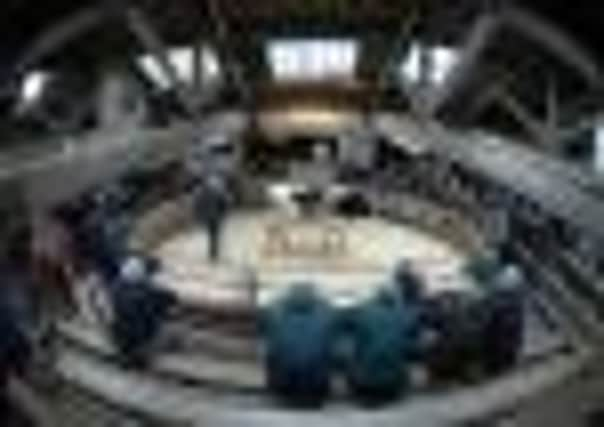Facts of buying and selling the traditional rural way


MANY farmers were cut to the core at the beginning of the year when former NFU vice-president Paul Temple called for livestock auctions to go online.
His argument was that animals could be bought and sold electronically. The furore that followed provided the inspiration to visit every one of Yorkshire’s surviving livestock markets to discover if they thriving or an outdated way of doing business.
Advertisement
Hide AdAdvertisement
Hide AdMarkets have always been a magnet to me. But is this outdated sentimentality? Quite possibly – one of my earliest memories is going to market with my grandpa. He was born into a family of farmers who also dealt in cattle and horses. I can remember the excitement of Irish bullocks arriving. By then, in the late 1970s it would be the tail end of the glory days of them coming over the Irish Sea.
My mother’s family also loved market days. We have diaries going back over a hundred years and they note the weight, price and who the animals were sold to. Market day was a real family day out. More often than not “mother came”, with banking and shopping done at the same time.
Farm sales punctuated my childhood. One memory is sitting up high on seating made of straw bales as my parents bought a massive red and white bull called Goddard in Hereford. There was also the selling of thoroughbred yearlings through the sale rings (proper seats here) at Doncaster and Newmarket. Ponies would come and go (some quicker than others if they misbehaved) to the horse sales.
There were still bow-legged gents in tweed and ladies in headscarves who knew what they were on about.
Afternoon school was skipped for a horse market.
Advertisement
Hide AdAdvertisement
Hide AdYears later it was from the salerooms that we bought bits and bobs of furniture and paintings.
There’s a buzz and banter about markets that has to be experienced.
In our homogenised world it’s grand to meet a proper character. Somebody wearing their cap at a jaunty angle or living off their wits, buying one week and selling the next. There are still pubs that come to life on market day. Many serving more mugs of tea than pints of beer.
But I may be looking through rose-tinted glasses at a system that puts animals through the stress of going under the hammer when they could perhaps be sold from A to B without passing through a sale ring.
Advertisement
Hide AdAdvertisement
Hide AdSo I set off on my journey of discovery, beginning at Bentham Market, 10 miles on from Settle.
There’s a distinctive smell at the market - sawdust. It’s not just peppered around the animals’ pens, there’s a good deep layer of it, even in the middle of the salering.
Around it I hear the phrase, “We used to be in dairy…” If I had a pound for every time someone said this it would have paid for the petrol.
Trade was buoyant and there was plenty of banter among marketgoers and an encouraging smattering of younger faces. But times have changed. Many that have milked for generations are now concentrating on sheep, with a good number moving over to keeping some beef cattle as well.
Advertisement
Hide AdAdvertisement